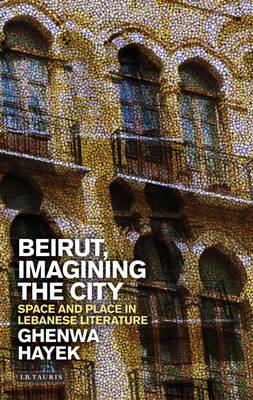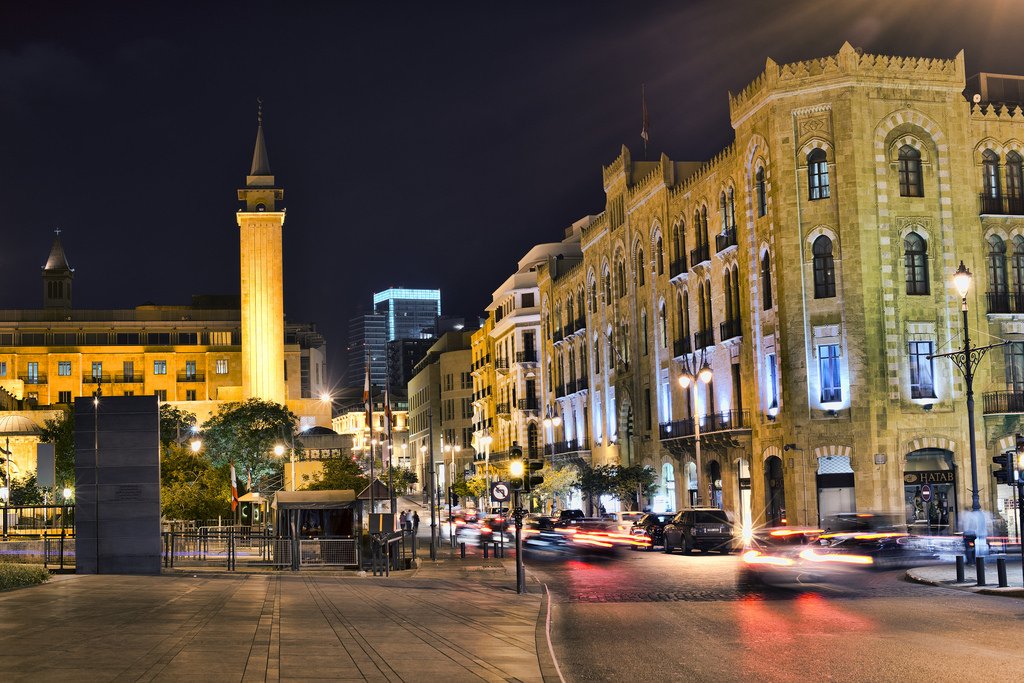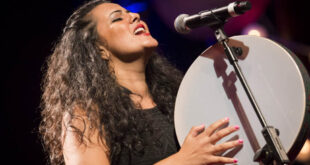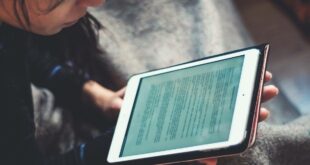
The field of comics scholarship has expanded radically in the past decade as the medium has entered into the realm of mainstream academic discourse, thanks to the contributions of scholars who are themselves comic artists, like Will Eisner and Scott McCloud, and others, notably Hillary Chute and Jared Gardner.[1] Comics are now ‘understood as one of the decisive pictorial elements of popular culture’, alongside film and television, and an integral part of modern culture, ‘since they enduringly form people’s perceptions of cultural, social and political patterns’.[2] In the Middle East, some attention has been paid to the growing trend and popularity of graphic narratives.[3] Much of the attention, however, has been about censorship and novelty: what can and cannot be drawn, and what is considered provocative or not in some markets,[4] or on the relationship between Islam and comics, as depicted in Naif al-Mutawa’s The 99.[5] The Lebanese comics I discuss in this chapter do not fall into either of these categories.
In comics, image and text collaborate to produce meanings. Originally dismissed for its perceived lack of depth and its populism, this form has ‘been increasingly recognized as a genre capable of subtlety and complexity’,[6] and has been used to address complex social, political, historical and personal topics. Even as they disagree on the nomenclature of this particular genre, all scholars who work on comics agree that this is a sequential art form that merges image and text, without subsuming one to the other.[7] Comic artist and theorist Will Eisner writes that:
The format of the comic book presents a montage of both word and image, and the reader is thus required to exercise both visual and verbal interpretive skills. The regimens of art and the regimens of literature become superimposed upon each other.[8]
Formally then, comics combine image and test to produce meaning; however, it is important to note that there visual and verbal narratives ‘do not simply blend together, creating a unified whole, but rather remain distinct’.[9] In other words, in graphic narratives, the meaning is produced from text and image working together.
Both the acts of producing and of reading graphic narrative are inherently social, constantly engaged in a dialogue between artist and reader, since they ‘communicate in a language that relies on a visual experience common to both reactor and audience.’[10] These narratives are always calling their readers’ ‘attention visually and spatially to the act, process, and duration of interpretation’, making them ‘a deliberate form of communication that aims to involve readers and produce some kind of response in them, be it compassion, understanding , respect, or simply entertainment.’[11] In fact, in order for comics or graphic narratives to work, the sequential artist must have ‘an understanding of the reader’s life experience […] An interaction has to develop because the artist is evoking images stored in the minds of both parties.’[12] In Lettre, Burj al-Murr is an iconic image that evokes a specific historical and cultural resonance in Kerbaj’s readers; the juxtaposed text functions with the image to reproduce the same feeling of alienation in the reader that it does in the author. For comics scholars, comics not only passively imagine communities, but they also actively form them through the very medium itself. Using shared cultural references and enforcing narrative perspective textually and visually, comics engage readers in a distinct manner.[13]
Influenced by the French bandes dessinées tradition and Japanese anime as much as the work of contemporary US comic artists like Art Spiegelman, Harvey Pekar or Chris Ware, recent Lebanese comics have developed their own identity, which combines the former’s interest in politics, history and cultural identity with the latter’s deeply idiosyncratic, often autobiographical, narrative techniques.[14] With the exception of Joumana Medlej’s ongoing Malaak, Angel of Peace, a project that its author describes as ‘Lebanon’s first superhero comic’, and Samandal, which curates and publishes the work of a number of Lebanese and international artists in different genres – and, hence, cannot be described as having one specific comic identity – most of these recent graphic narratives can be described as ‘autographics’.[15] In this passage, will pair two texts from the immediate aftermath of the 2006 conflict: Merhej’s A’taqid and excerpts from Kerbaj’s ‘Kerblog’. Written during or immediately following the July 2006 war in Lebanon, Kerbaj’s and Merhej’s autographic works address issues of trauma and generational memory that are particular to their generation; these texts also express an anxiety about the future that emerges from the sense of the cyclical nature of conflict in Lebanon, and continues to resonate into the present.
Merhej’s work is probably more in line with the traditional format of graphic narrative in general, and autographics in particular. Her first book, published only a few months after the conflict’s end in August 2006, recounts her experience of living through the 33 days of war, and contains all the visual elements of traditional comics: illustrations, speech bubbles, gutters,[16] and sequential images. As it is part of a blog, rather that on a page, ‘Kerblog’ is a less traditional form of comic.[17] While it certainly narrates the day-to-day life of Mazen Kerbaj, its autographic hero, during the war in a visual and verbal manner, and its narrative is often sequential – for example, there is an ongoing account, which takes place over several days, about whether or not Mazen’s ex-wife will flee Lebanon with their son – its pacing and the manner in which it mediates time are virtual, rather than physical. To read it, the reader must first go to the website and scroll down or click through the images in sequence. In other words, its gutters – the empty spaces in which, as Scott McCloud argues, much of the relationship between a comic’s reader and the comic’s author occurs – take place in time, through the click of the reader’s mouse, and not on the page, between one panel and the next.[18] Nevertheless, following Jared Gardner, I argue that the comic genre is defined ‘less by its formal properties – speech balloons, gutters, even sequential images – than by its formal invitation to the reader to project herself into the narrative and to project the narrative beyond the page.’[19] This narrative relationship depends on a sort of social contract, which h in the ‘Kerblog’ case is the reader’s volition to keep on clicking.
What sets the autographic medium apart from the purely autobiographical form is that comic artists not only use autobiography to ‘represent their sense of self, convey their memories of past events and dreams for the future, create a sense of authenticity and engage their readers,’ as all autobiographers must, but they also use the particularities of the comic form in order to engage in what Elisabeth El Refaie describes as a process of ‘commemoration’, in which ‘private memories are shaped into a narrative for public consumption. In other words, comic artists use the form to communicate with their audiences in ways that other autobiographers cannot. For example, in the top-left corner of the ‘Kerblog’ entry titled ‘One War Leads to Another’ (and subtitled, ‘The Lebanese Wars Chronicles’) from 23 July 2006, the text reads, ‘what we knew from the civil war (1975-1990)’. This text, like all the other images and labels in the panel, is enclosed in a spiked bubble. Inside each bubble is an image and a caption; these include mundane statements like ‘a lot of whiskey’, ‘no work’, ‘no electricity’, ‘a lot of cigarettes’ and ‘a lot of sounds’, but also more existential ones, like ‘a lot of questions’ and, in a bigger caption, ‘ a lot of nothing and nothing to do’. The panel works its way visually and textually from left to right, finally leading the eye to the large speech bubble in the bottom-right corner, which reads, ‘What is new in this “new” war?’; the final spiked bubble, in the very bottom-right corner of the panel shows a small Mazen answering that question with, ‘I am not young anymore,’ Visually, the bulk of the panel is filled with the shared wartime experiences of a Lebanese imagined community – the ‘we’ of the top-left caption. These shared memories of past war fill up the page, their spiked enclosures emphasizing the barbed nature of these recollections. Together these communal memories simultaneously push Mazen’s concern to one side, but they also emphasize just how many of his memories are shared by this communal ‘we’.
Mazen Kerbaj’s war blog uses the form to engage with his readership in a manner that retains these dual tension between the writer and the collective, and between the realization that the work is a produced work and its retention of an authentic immediacy, without resolving them; this; Jared Gardner argues, is a quality particular to comics. Gardner writes that autographic comics, which he also calls graphic memoirs, make:
A simultaneous claim of autobiography and fiction, and [a] simultaneous demand on the reader for both distance and identification. If fiction is an ideal form for identification and affective attachment autobiography is an ideal form for auratic distance and contemplation (including the transformative silences of testimony), autography is the narrative form that allows both to share the frame.[20]
A panel from ‘Kerblog’ dated 15–16 July 2006 addresses this issue head on. As bomb flashes go off around him, Mazen is looking at the computer screen, from which disembodied eyes stare back at him. The expression on his face is one of happiness, and the text in the speech bubble reads, in Arabic, ‘Thank god for this window!’ In this panel, the author is acknowledging that his autographic blog is a pubic artifact, shared by all those who read it. He derives joy and pleasure from this, and is able to forge a relationship with his readers through placing himself in his work/ By exposing his vulnerability in this way, Kerbaj forms a more empathic relationship with this readership, which in turn highlights the authenticity of this experience. Elisabeth El Refaei writes that:
The resulting increased awareness of the mediating role of the author/artist in the part of readers does not necessarily affect the perceived authenticity of a particular autobiographical work. In fact, artists who draw attention to their own interpretative practices and to the artificiality of all representation may, paradoxically, strike the reader as more rather than less authentic.[21]
In Lena Merhej’s memoir of the 2006 war, as soon as the character Lena hears the news, she reacts to it in a specific way. The image shows Lena, eyes looking down in concern at a know – or perhaps a hole, as if caused by shrapnel or a bullet while the text says, ‘I felt sick to my stomach. I had to take care of myself […] I decided to do something for myself that I had ached to do for a while.’ The following panels on the page depict Lena drawing a portrait of her friend. This selfish admission that the author’s first reaction was to think of herself, and to do something for herself, elicits the reader’s sympathy through Lena’s expressive images, which work along with the text, and, in particular, through the eye contact that the character maintains with her readers.
This sense of collaboration and engagement between reader and artist is reinforced visually in both comics, and used to draw the reader into an ethical stance vis-à-vis the character in question. In Lena Merbej’s work, Lena is always facing the reader, her eyes drawn slightly larger than life-size. In comics, the way in which the face and the body are drawn are particularly relevant. Elisabeth El Refaie explains:
Where there is apparent ‘eye-contact’ between a depicted character and the viewer, the former seems to be ‘demanding’ something of the latter, whereas lack of eye contact invites detached scrutiny […] an eye level view suggests an equal relationship […] finally, [a horizontal angle] is thought to indicate the degree of involvement a viewer is invited to feel with a person in an image, with a full frontal view indicating a maximum degree of involvement.[22]
While Kerbaj most often depicts himself in profile, he nevertheless draws both his eyes on the same side of his face, thereby always interpellating his reader into the frame.[23] Rather than inviting a passive, external gaze onto the events of the war and the ways in which they are playing out these autographic texts force the reader into face-to-face contact with the artist. And, as this face grows increasingly more haggard as the war drags on, the reader is forced into an empathetic relationship with the artist’s autographic self. In Understanding Comics, Scott McCloud expands on the amplificatory effect that the simplified drawings in cartoons and comics have on the reader’s emotion and engagement with the text. McCloud explains that the simple cartoon forces that reader to transition from a detached to an involved relationship, in which instead of simply observing the cartoon figure, he or she becomes the cartoon.[24] It is comics’ ability to represent and produce meaning in a medium other than the purely textual language of literature or the purely visual language of the image, that makes it a privileged medium fro communicating the precariousness of life at those limits of representation and imagination. Kerbaj and Merhej use the form’s qualities to draw their readers in, and to attempt to position themselves and their readers within their country’s violence past and present.[25]
For example, after describing the conflicts that the 2006 war was producing inside Lebanon and among her acquaintances, Lena writes, ‘I preferred to resist in the best way I knew. So, I drew.’ The entire page on which this occurs – save for the initial panel, in which we see Lena smiling, waving and drawing, her eyes looking outwards from the page – is borderless and lists the items that she has drawn for the children displaced by the hostilities. From her panel, Lena is both producing these items and engaging with these productions; the text places these images of drawing and writing side by side. The comic directs the reader’s attention to the precariousness of childhood in war through its childlike imagery and the text. A’taqid, like all comics, brings together the personal and the collective, the individual and the political; it draws attention to its own artificiality without condemning it; most significantly, in its direct engagement between artist and audience, it creates an ethical, commemorative relationship.
The relationship between empathic representation, the kind in these autographics, and the ethics of representation is one that becomes particularly pertinent in wartime. In her celebrated work on photographic representations of war and suffering, Regarding the Pain of Others, Susan Sontag argues that the photographic image has become a compromised form for communicating suffering, since it makes the viewer both passive and complicit in the consumption of this suffering: ‘when we look at photos of great pain, we are complicit, we become voyeurs, whether or not we mean to be.’[26] Building on Sontag’s argument, Judith Butler outlines how, in the contemporary over-mediated landscape of representation, media consumers have become almost inured to human suffering, and, therefore, to an ability to ethically connect with and respond to it.[27] Butler asks, ‘what media will let us know and feel that frailty, know and feel at the limits of representation as it is currently cultivated and maintained?’[28]
Butler’s question is intended to remain rhetorical; however, in their ability to produce and reproduce empathy, comics like Kerbaj’s and Merhej’s may contain a tentative answer. In the emphatic relationships that they construct between reader and viewer, comics undermine Sontag’s emphasis on voyeuristic complicity in a manner that disengages the viewing of an image from passivity. In fact, as the scholarship around comics has shown, the combination of text and image that constitutes the genre makes this relationship an active, mutually engaged one, rather than a merely passive one. In some ways then, the empathic relationship constituted between reader and artist through the unique relationship of text and image in comics becomes a means of overcoming the problem of representing suffering. Particularly in Lebanon, where images of combat are omnipresent and have been since the early days of the civil war, the search for alternative modes of representing conflict in an ethical manner continues to occupy artists and writers.
In comics, one of the ways in which trauma and suffering has been represented is through what Elisabeth El Refaie describes as ‘silent panels’, which are ‘ways of depicting horrible memories of that which cannot be drawn or spoken.’[29] Silence, for El Refaie, becomes a way to engage directly with the issue of representation, and the impossibility of representation in certain situations – a problem that occupies several panels in ‘Kerblog’. In one, posted midway through the war on 27 July2006 and titled ‘Black’, Kerbaj inserts a panel that occupies an entire page which has been coloured black. Two text bubbles, in white, puncture the blackness of the page. The first, in the centre of the page asks, ‘How can I show what I am feeling?’ The second, at the bottom of the page, asks, ‘How can I understand what I am feeling?’ The questions puncture the darkness around them, thereby puncturing the silence, but the blackness remains overwhelming. In another example, posted soon after the 2006 Israeli bombing of the southern Lebanese village of Qana, there are no images in the panel, just three speech bubbles. Unlike the smooth exterior of regular speech bubbles, these text bubbles are spiky, where emphasizes them but also makes them seem prickly. The first reads, ‘2000 years ago, in Qana, Christ turned water into wine.’ Below it, the second bubble reads, ‘Today, in Qana, the Israeli Air Force turned children into ashes.’ Finally, the third bubble reads, Today, in Beirut, I cannot turn this page into a drawing.’ Kerbaj’s panel, visually filled the three distinct pieces of text, nevertheless gestures to the author’s inability to draw; the page is empty, despite being full, because it is only filled with text and not with its counterpart, the image. As a result, like the panel described above, it is presented as a silent panel. Even silence in graphic narratives is communal and empathetic, however, El Refaie argues, ‘invit[ing] readers to project their own imagined version of this scene onto blank space, which encourages them to engage emotionally’ with the artist and their emotional intensity.[30] In the moments in which visual representation is impossible, the text works visually to connect the artist to his or her reader and to continue to build the relationship of empathy and trust between reader and autographic artist.
 Arab Media & Society The Arab Media Hub
Arab Media & Society The Arab Media Hub





